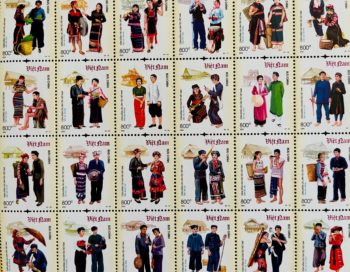Vietnamese Language Variations Posted by Kandle Dart on Jan 25, 2021 in Culture, Pronunciations, Vocabulary
Just like other countries in the world, the people of Vietnam mainly speak the same language, although people in each region use different dialects (thổ ngữ) with different phonology and vocabulary. There are three main dialects each with a variety of accents (giọng) in tiếng Việt (Vietnamese language):
- Tiếng/giọng Bắc (Northern dialect/acccent)
- Tiếng/giọng Trung (Central dialect/accent)
- Tiếng/giọng Nam (Southern dialect/accent)
These dialects and their accents are used by people who live in three main geographical areas:
- Miền Bắc (Northern region)
- Miền Trung (Central region)
- Miền Nam (Southern region)
Which dialect is easiest to speak and understand? If you would like to learn Vietnamese, definitely stick with the official standard language, which is tiếng Bắc with giọng Bắc Hanoi. Both tiếng Bắc with a Hanoi accent and Tiếng Nam with a Saigon accent are considered easy to understand by the majority of the population. Tiếng/giọng Trung is much harder to understand. Speakers from some particular areas in the provinces of Nghệ An, Quảng Nam, and Quảng Ngãi have a distinctive heavy accent that sounds incomprehensible to people outside of the region. In general, tiếng Bắc and tiếng Trung have a higher pitch/tone compared to tiếng Nam.
Tiếng/giọng Bắc (Northern dialect/acccent)
When people mention the standard dialect and accent that you will often hear from the official Vietnamese government broadcasts on radio or television in the north, they mean the Northern dialect with a Hanoi accent. Throughout history, Hanoi was the capital of many Vietnamese dynasties. Today, it is once again the capital of Vietnam. Hanoi speakers have the most accurate pronunciation of words with the dấu ngã (tilde sign) tone and dấu hỏi (hook sign) tone. The northerners, however, often pronounce words with the letter “s” as an “x” sound, and “tr” as a “ch” sound.
Tiếng/giọng Trung (Central dialect/acccent)
In this context, tiếng Trung here means the Vietnamese Central dialect. Within the tiếng Trung dialect, there are three distinctive accents in the following three main central regions:
- North Central Coast to include Thanh Hóa, Nghệ An, and Hà Tĩnh provinces
- Central Region to include Quảng Bình, Quảng Trị, and Thừa Thiên provinces, and Huế
- South Central Coast to include Quảng Nam, Quảng Ngãi, Bỉnh Định, and Phú Yên provinces
The main characteristic of Tiếng Trung is the dấu sắc (a short, raised sign), dấu hỏi (a hook sign), dấu ngã (tilde sign). All are pronounced in the same tone as dấu nặng (a dot sign, drop tone). Therefore, it sounds heavy compared to tiếng Bắc and tiếng Nam.
I love listening to tiếng Trung with a Huế accent. It has a beautiful rhythm, like singing a song. Until 1954, Huế was the capital of the Kingdom of Vietnam for over a century (during the Nguyễn dynasty). Thus, Huế is rich in culture with its own vocabulary.
Tiếng/giọng Nam (Southern dialect/acccent)
The Southern dialect is spoken in the south of Vietnam, including Bà Rịa-Vũng Tàu, and the Mekong Delta. The Southern dialect is easily identifiable because speakers pronounce words with the letter “v” as a “z”. In my opinion, the Southern dialect with a Saigon accent today is a blend between the old southern and the northern dialect, as a result of the mass migration of northerners to the south in 1954 and after 1975 due to political events and economic reasons. It’s not hard to find a person who speaks different dialects in Saigon, but that’s not the case in Hanoi or Huế.
Examples of Language variations with each dialect
To demonstrate the language variations between dialects, below are examples of common words that are unique to the north, central, and south dialects, but that all carry the same meaning.
| Northern Dialect | Central Dialect | Southern Dialect | English |
| Bát | Tô/Đọi | Chén | Bowl |
| Cốc | Ly | Ly | Glass |
| Muỗng/Muỗm | Thìa | Thìa | Spoon |
| Muôi | Môi | Giá | Ladle |
| Hoa | Bông | Bông | Flower |
| Mẹ/Mợ | Mạ | Má | Mother |
| Bố/Thầy | Cha | Ba | Father |

Photo taken and used with permission from Kandle Dart

Build vocabulary, practice pronunciation, and more with Transparent Language Online. Available anytime, anywhere, on any device.



